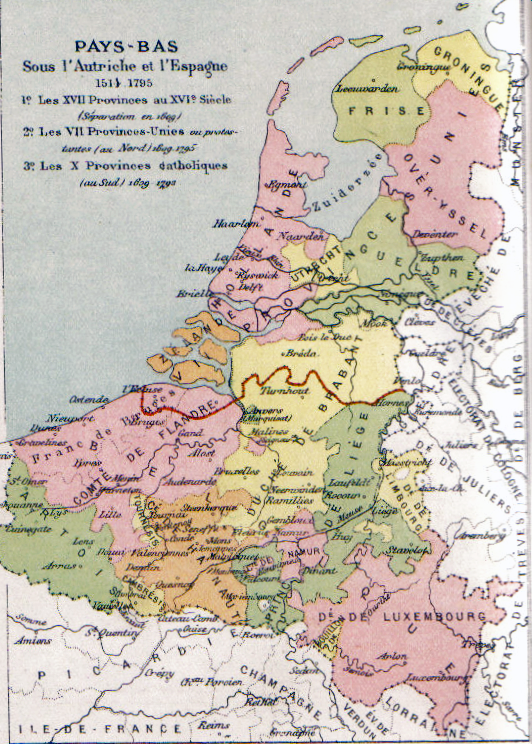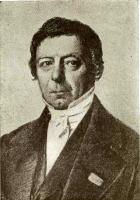|
Place De Brouckère
The ( French, ) or ( Dutch) is a major square in central Brussels, Belgium. It was created following the covering of the river Senne (1867–1871), replacing the Temple of the Augustinians, which was demolished in 1893. It is named in honour of Charles de Brouckère, a former mayor of the City of Brussels and professor at the Free University of Brussels, who played an important political role during the Belgian Revolution of 1830. The square measures approximately and is nearly entirely paved. The Place de Brouckère is located in the perspective of the Boulevard Émile Jacqmain/Émile Jacqmainlaan and the Boulevard Adolphe Max/Adolphe Maxlaan to the north, forming a "Y" crossroad, and the Boulevard Anspach/Anspachlaan to the south. The area around the square is characterised by the presence of theatres, a large cinema, hotels and restaurants, as well as some of the city's most important entertainment venues and shopping streets. It is served by the metro and '' prem ... [...More Info...] [...Related Items...] OR: [Wikipedia] [Google] [Baidu] |
Neighbourhoods In Brussels
There are several neighbourhoods in Brussels, Belgium. Their names and borders are not officially defined, and they might vary occasionally. The districts listed by the Brussels-Capital Region have a statistical purpose, and therefore do not always correspond to the historic municipal districts. In addition, their borders are not necessarily identical according to regional or municipal sources, and may thus overlap. City of Brussels Pentagon Central Quarter The origins of Brussels can be traced back to the heart of Saint-Géry/Sint-Goriks Island, formed by the river Senne, on which a first keep was built around 979. Nowadays, the neighbourhood around the Halles Saint-Géry/Sint-Gorikshallen, a former covered market, is one of the capital's trendiest districts. In this Central Quarter (, ), there are some vestiges of the 13th-century first walls of Brussels, which encompassed the area between the first port on the Senne, the old Romanesque church (later replaced by the B ... [...More Info...] [...Related Items...] OR: [Wikipedia] [Google] [Baidu] |
Trams In Brussels
The Brussels tramway network is a tram system serving a large part of the Brussels, Brussels-Capital Region of Belgium. It is the 16th largest tram system in the world by route length, in 2017 providing 149.1 million journeys (up 9.5% on 2016) over routes in length. In 2018, it consisted of 18 tram lines (eight of which—lines 3, 4, 7, 25, 32, 51, 55 and 82—qualified as ''premetro'' lines, and five of which—lines 3, 4, 7, 8 and 9—qualified as "Chrono" or "Fast" lines). Brussels trams are operated by Brussels Intercommunal Transport Company, STIB/MIVB, the local public transport company. The network's development has faced issues including the inconsistent route pattern resulting from the closure of the interurban trams, the conflict between low-floor surface trams and high-floor underground trams, and whether the trams run on the right or the left. History Before the First World War Belgium's first horse-drawn trams were introduced in Brussels in 1869, running from the ... [...More Info...] [...Related Items...] OR: [Wikipedia] [Google] [Baidu] |
Ixelles
(French language, French, ) or (Dutch language, Dutch, ) is one of the List of municipalities of the Brussels-Capital Region, 19 municipalities of the Brussels-Capital Region, Belgium. Located to the south-east of Pentagon (Brussels), Brussels' city centre, it is exclave, geographically bisected by the City of Brussels. It is also bordered by the municipalities of Auderghem, Etterbeek, Forest, Belgium, Forest, Uccle, Saint-Gilles, Belgium, Saint-Gilles and Watermael-Boitsfort. , the municipality had a population of 88,521 inhabitants. The total area is , which gives a population density of . In common with all of Brussels' municipalities, it is legally Multilingualism, bilingual (French–Dutch). It is generally considered an affluent area of the region, and is particularly noted for its communities of Brussels and the European Union, European and Congolese immigrants. Geography Ixelles is located in the south-east of Brussels and is divided into two parts by the Avenue Loui ... [...More Info...] [...Related Items...] OR: [Wikipedia] [Google] [Baidu] |
Baroque
The Baroque ( , , ) is a Western Style (visual arts), style of Baroque architecture, architecture, Baroque music, music, Baroque dance, dance, Baroque painting, painting, Baroque sculpture, sculpture, poetry, and other arts that flourished from the early 17th century until the 1750s. It followed Renaissance art and Mannerism and preceded the Rococo (in the past often referred to as "late Baroque") and Neoclassicism, Neoclassical styles. It was encouraged by the Catholic Church as a means to counter the simplicity and austerity of Protestant architecture, art, and music, though Lutheran art#Baroque period, Lutheran Baroque art developed in parts of Europe as well. The Baroque style used contrast, movement, exuberant detail, deep color, grandeur, and surprise to achieve a sense of awe. The style began at the start of the 17th century in Rome, then spread rapidly to the rest of Italy, France, Spain, and Portugal, then to Austria, southern Germany, Poland and Russia. By the 1730s, i ... [...More Info...] [...Related Items...] OR: [Wikipedia] [Google] [Baidu] |
Province Of Brabant
The Province of Brabant (, ; ) was a province in Belgium from 1830 to 1995. It was created in 1815 as South Brabant, part of the United Kingdom of the Netherlands. In 1995, it was split into the Dutch-speaking Flemish Brabant, the French-speaking Walloon Brabant and the bilingual Brussels-Capital Region. History United Kingdom of the Netherlands After the defeat of Napoleon in 1815, the United Kingdom of the Netherlands was created at the Congress of Vienna, consisting of territories which had been added to France by Napoleon: the former Dutch Republic and the Southern Netherlands. In the newly created kingdom, the former French département of Dyle became the new province of South Brabant, distinguishing it from Central Brabant (later Antwerp province); and from North Brabant (now part of the Netherlands), all named after the former Duchy of Brabant. The provincial governors during this time were: * 1815–1818: François Joseph Charles Marie de Mercy-Argenteau * 1818– ... [...More Info...] [...Related Items...] OR: [Wikipedia] [Google] [Baidu] |
Archives Of The City Of Brussels
The Archives of the City of Brussels (; ) preserves documents related to the City of Brussels (Belgium) and its history. It holds the third largest collection of newspapers and periodicals in Belgium. The public can access its collections through its online catalog, visiting the archive itself, or visiting a museum exhibiting loaned items. History Archives were first kept in Brussels in the Church of St. Michael and St. Gudula (now the cathedral) and the Church of St. Nicholas' tower. In the 16th century, these collections were joined together in the Town Hall. In the 17th century, the collection was moved to two buildings on the Grand-Place/Grote Markt (Brussels' main square). These buildings and some of the city's records were destroyed during the Nine Years' War. In 1979, the Archives moved into a complex of buildings that formerly housed a textile business. The building is noted as an example of early 20th-century commercial architecture. File:JP2015 008.jpg, Entranc ... [...More Info...] [...Related Items...] OR: [Wikipedia] [Google] [Baidu] |
Jules Anspach
Baron Jules Victor Anspach (20 July 1829 – 19 May 1879) was a Belgian liberal politician and mayor of the City of Brussels. He is best known for his renovations surrounding the covering of the river Senne (1867–1871). Life Anspach was born in Brussels into a family of Calvinist Genevan origin. His father François (died 1858) served in the Belgian Chamber of Representatives. Jules Anspach studied law at the Free University of Brussels, becoming a Doctor of Law. As with many Liberals, Anspach was a Freemason. Like his father, Anspach was elected to the Chamber of Representatives. Anspach rose rapidly, replacing Fontainas as mayor of Brussels in 1863, aged only 34, holding the office until his death in 1879. He effected massive changes to the urban landscape of Brussels, centred on his oeuvre, the covering of the Senne (1867–1871). His renovations in Brussels paralleled those by Baron Haussmann in Paris. The modern city remains largely Anspach's creation in its basic form ... [...More Info...] [...Related Items...] OR: [Wikipedia] [Google] [Baidu] |
Mayor Of The City Of Brussels
This is a list of mayors or burgomasters of the City of Brussels. Burgundian Netherlands (1384–1482) *1380: Pipenpoy family, Geert Pipenpoy *1381: Pipenpoy family, Geert Pipenpoy and Jacques Stovaert *1421: J. Swaeff, J. Cooman *1422: Walter Vanden Heetvelde, Petrus van Bolenbeke *1423: Guillaume de Kesterbeke, Jan van Muysen *1424: Jan van Coundeberg, called Rolibuc, Gielis Daneels, *1425: Willem van Herzele, J. de Schore, called de Briedere *1426: Wenceslas t'Serclaes, J. Rampaert *1427: Jean de Hertoghe, Michel de Mabeert *1428: H. Magnus, J. de Broeckhoven *1429: Willem van Kesterbeke, Daniel Poelbroot *1430: Simon van Ophem, J. de Schore, called de Briedere *1431: Pipenpoy family, Walter, son of Gerard Pipenpoy, J. Roypens *1432: Wenceslas t'Serclaes, Félix de Hont *1433: J. Bernaige, H. de Beringen *1434: Jean de Frigidomonte *1435: Walter Vandernoot, J. Rampaert *1436: Walter Vanden Winckele, Arnout Wellems, said Van Almkercke *1437: Henri Taye, J. van Broeckhoven *143 ... [...More Info...] [...Related Items...] OR: [Wikipedia] [Google] [Baidu] |
Central Boulevards Of Brussels
Central is an adjective usually referring to being in the center of some place or (mathematical) object. Central may also refer to: Directions and generalised locations * Central Africa, a region in the centre of Africa continent, also known as Middle Africa * Central America, a region in the centre of America continent * Central Asia, a region in the centre of Eurasian continent * Central Australia, a region of the Australian continent * Central Belt, an area in the centre of Scotland * Central Europe, a region of the European continent * Central London, the centre of London * Central Region (other) * Central United States, a region of the United States of America Specific locations Countries * Central African Republic, a country in Africa States and provinces * Blue Nile (state) or Central, a state in Sudan * Central Department, Paraguay * Central Province (Kenya) * Central Province (Papua New Guinea) * Central Province (Solomon Islands) * Central Province, Sri ... [...More Info...] [...Related Items...] OR: [Wikipedia] [Google] [Baidu] |
Brussels Tram Route 10
The premetro and tram route 10 in Brussels, Belgium, is operated by STIB/MIVB, and connects the Hôpital Militaire/Militair Hospitaal stop in Neder-Over-Heembeek in the City of Brussels to the Churchill stop in the southern municipality of Uccle Uccle (French language, French, ) or Ukkel (Dutch language, Dutch, ) is one of the List of municipalities of the Brussels-Capital Region, 19 municipalities of the Brussels-Capital Region, Belgium. Located in the southern part of the region, it .... It began service on 23 September 2024, taking over most of the route of line 3, which was disbanded that day. See also * List of Brussels tram routes References External links STIB/MIVB official website* Translated from: nl:Tramlijn 10 (Brussel) {{Urban rail transport in Brussels 10 City of Brussels Forest, Belgium Saint-Gilles, Belgium Schaerbeek Uccle ... [...More Info...] [...Related Items...] OR: [Wikipedia] [Google] [Baidu] |
Brussels Metro Line 5
Line 5 is a rapid transit line on the Brussels Metro in Belgium operated by STIB/MIVB. It connects Herrmann-Debroux in the south-east of Brussels to Erasme/Erasmus in the south-west via the city centre. It has existed in its current form since 4 April 2009, when the section of former line 1A between Beekkant and Roi Baudouin/Koning Boudewijn was replaced by the section of former line 1B between Beekkant and Erasme. Starting from Herrmann-Debroux, the line crosses the municipalities of Auderghem, Etterbeek, City of Brussels, Molenbeek-Saint-Jean, Koekelberg and Anderlecht. It serves 28 metro stations and has a common section with line 1 between Gare de l'Ouest/Weststation and Merode, and with lines 2 and 6 between Gare de l'Ouest and Beekkant. At Arts-Loi/Kunst-Wet, the line also connects with lines 2 and 6. Railway connections are possible at Brussels-Central, Brussels-Schuman, Merode and Brussels-West. The first section of this line was built in the late 1960s be ... [...More Info...] [...Related Items...] OR: [Wikipedia] [Google] [Baidu] |




